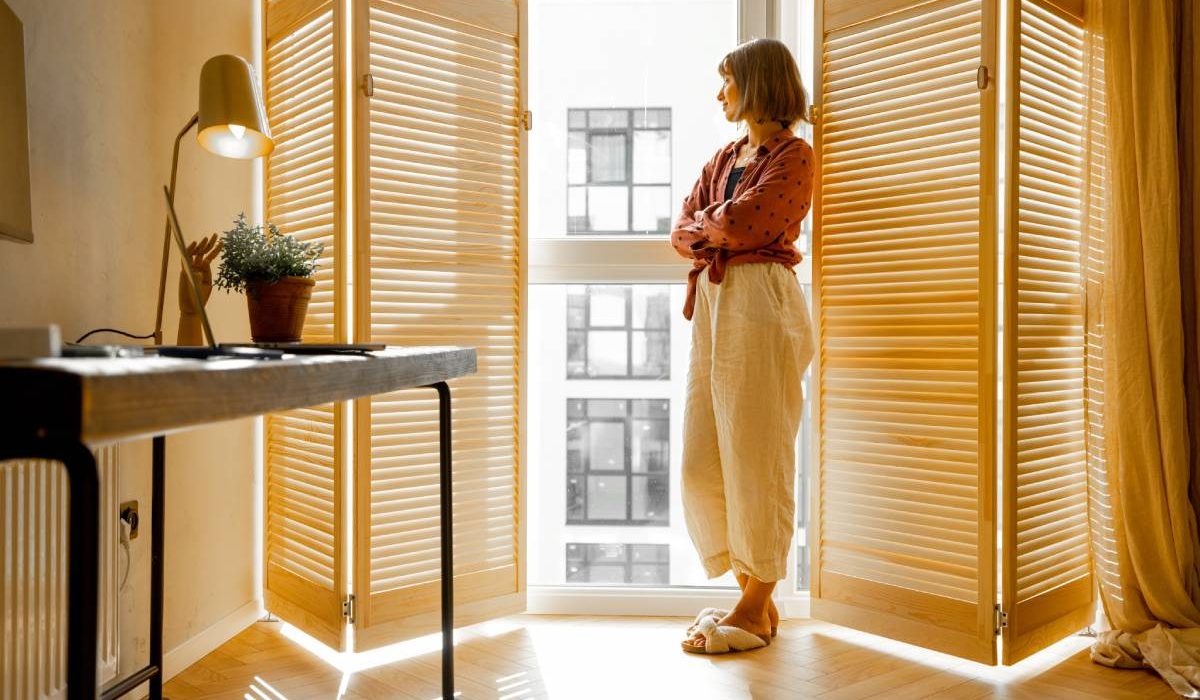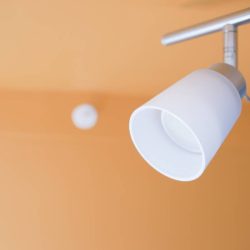Plantation shutters are a highly popular and timeless window treatment option for modern homeowners, renowned for their durability and aesthetic appeal. However, over time, you may notice that your plantation shutters are beginning sag.
In this article, we’re going to look at the reasoning behind sagging plantation shutters, discuss whether it’s worth replacing them or attempting repairs, provide detailed guidance on how to fix sagging plantation shutters, and more.
If you’ve encountered sagging plantation shutters and don’t know what to do, this is the article for you. Let’s get started!
Why Do Plantation Shutters Sag?
There are a number of different reasons that may contribute to sagging plantation shutters:
- Poor installation: Insufficient or improper installation can lead to sagging over time. If the shutters were not securely fastened or if the frame was not properly aligned during initial installation, sagging is likely to occur.
- Wear and tear: As with any long-term use, wear and tear will invariably cause the hinges, louvres, or frame of plantation shutters to weaken and sag.
- Humidity and moisture: Excessive humidity or moisture, such as in bathrooms or kitchens, can cause the wood to expand and contract, leading to sagging.
- Low-quality materials: Inferior-quality materials tend to lack the necessary structural integrity to withstand the weight of the shutters, thus resulting in sagging over time.
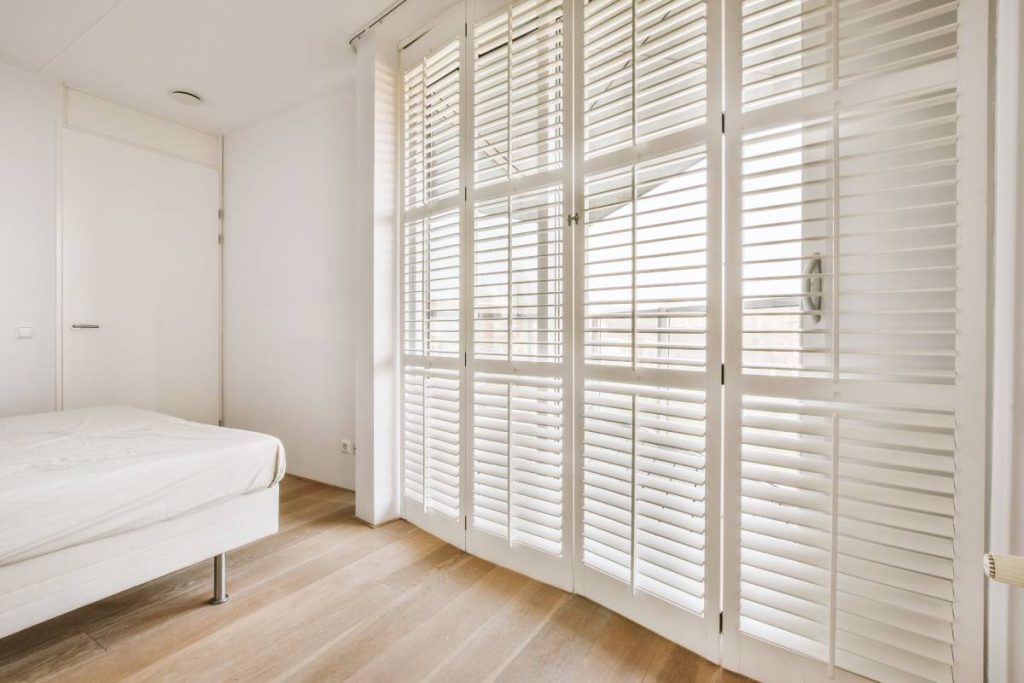
Is it Worth Replacing Sagging Plantation Shutters or Should You Try to Fix Them First?
Before rushing in to making a decision to replace your sagging plantation shutters, consider the extent of the sagging, the overall condition of the shutters, and your available budget. Here are some key points to consider first:
- Minor sagging: If the sagging is minimal and the shutters are in otherwise good condition, attempting to fix them can be a cost-effective solution.
- Extensive sagging or severe damage: If the sagging is significant, the shutters are extensively damaged, or the frame is compromised, it may be far more practical and aesthetically pleasing to replace the shutters entirely.
How Do You Fix Sagging Plantation Shutters?
If you decide to go ahead and attempt to fix your sagging plantation shutters, as opposed to replace them, here’s a step-by-step guide to help you:
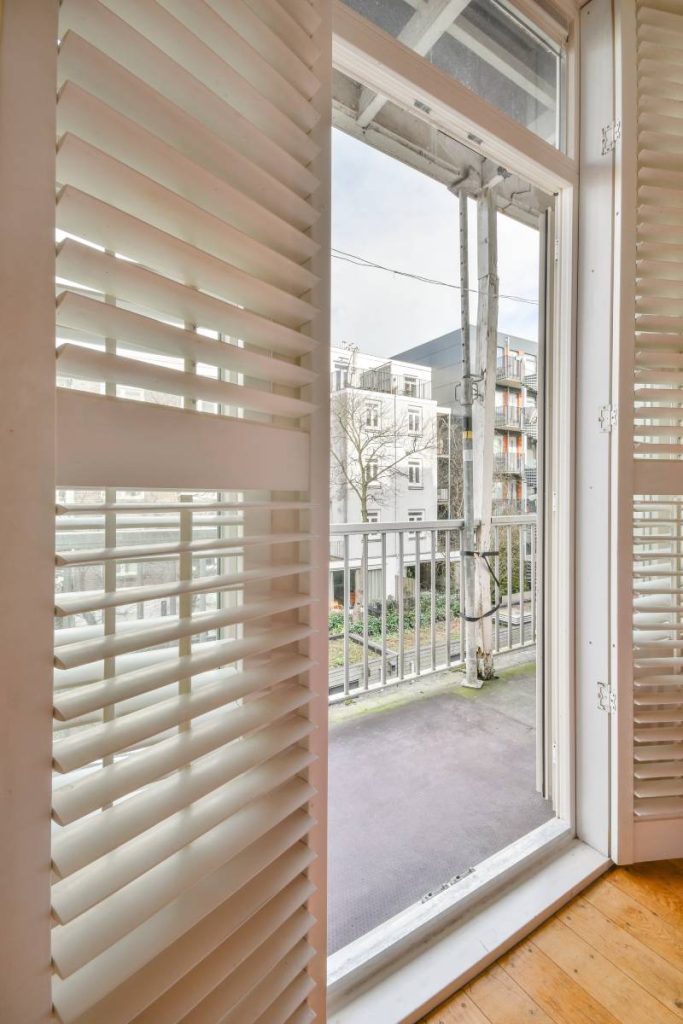
- Identify the cause: First you should determine the cause of the sagging, such as loose hinges, damaged louvres, or misaligned frames. This will enable you to prescribe the appropriate treatment.
- Tighten loose hinges: Next, inspect the hinges and tighten any loose screws. If the hinges are severely damaged, you may wish to consider replacing them.
- Straighten misaligned frames: If the frame is misaligned, carefully loosen the screws holding it in place. Then, gently adjust the frame back into position, ensuring it is level and straight, and then tighten the screws back up afterwards.
- Repair or replace damaged louvres: If individual louvres are sagging or damaged, you can remove them by tilting them open and lifting them out of their slots. You can then assess whether they can be repaired or need replacement. For repairs, you can reinforce the louvres with adhesive or replace the damaged parts.
- Reinforce weak areas: If certain parts of the shutters are weak or appear to be prone to sagging, you can opt to reinforce them with additional screws or brackets.
- Regular maintenance: Finally, to prevent future sagging, establish a routine maintenance plan, including dusting, cleaning, and tightening screws periodically.
Is There a Way to Prevent Plantation Shutters from Sagging?
While some sagging may be inevitable due to eventual wear and tear, you can take steps to minimise or prevent it:
- Choose high-quality materials: The best way to prevent sagging is to opt for plantation shutters made from sturdy and durable materials in the first place, such as hardwood or high-quality PVC, both of which are less likely to sag over time.
- Proper installation: You must also ensure that your plantation shutters are installed correctly by experienced professionals who follow proper installation techniques.
- Avoid excessive humidity and moisture: In areas prone to high humidity or moisture, consider selecting materials that are resistant to water damage, such as aluminium, vinyl, or composite shutters.
Which Plantation Shutter Material is Most Likely to Sag Over Time?
While all materials can experience sagging to some extent, wood plantation shutters are more prone to sagging compared to vinyl or composite materials. This is because wood can be susceptible to changes in humidity and moisture, which can lead to warping and sagging.
That being said, wood does provide an unparalleled aesthetic appeal that aluminium or PVC shutters can’t quite compete with – depending on your personal preference of course.
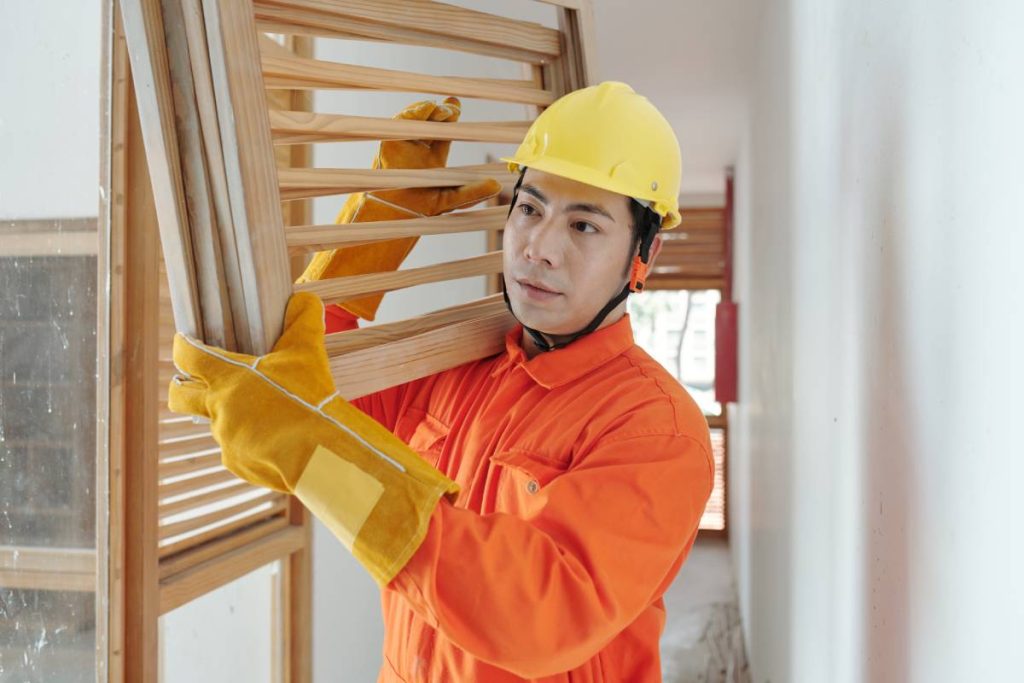
What Other Faults Are Common in Plantation Shutters?
Apart from sagging, here are some other common faults that may occur with plantation shutters:
- Warping: Wood shutters can warp due to exposure to moisture or extreme temperature changes.
- Sticking or difficulty in operation: Over time, shutters may become challenging to open, close, or adjust due to dust accumulation, debris, or misaligned components.
- Loose or broken louvres: Louvres may become loose or break, affecting the functionality and appearance of the shutters.
Conclusion
Sagging plantation shutters are a common nuisance due to poor installation, wear and tear, excessive moisture, and the selection of low-quality materials. Again, depending on the extent of the sagging and overall condition of the shutters, you can decide whether to repair or replace them entirely.
If you choose to fix your sagging plantation shutters, be sure to follow the step-by-step guide provided above and address the specific issues causing the sagging.
In order to prevent sagging from happening too soon, choose high-quality materials, ensure proper installation from the pros, and avoid excessive humidity and moisture.
While wood plantation shutters are indeed more susceptible to sagging, vinyl or composite materials offer increased resistance.
Finally, you should try to keep an eye out for other potential faults such as warping, sticking, or loose louvres that may occur with plantation shutters.
If you do this, you shouldn’t have any problem keeping your plantation shutters looking great and functioning optimally for many years to come!


